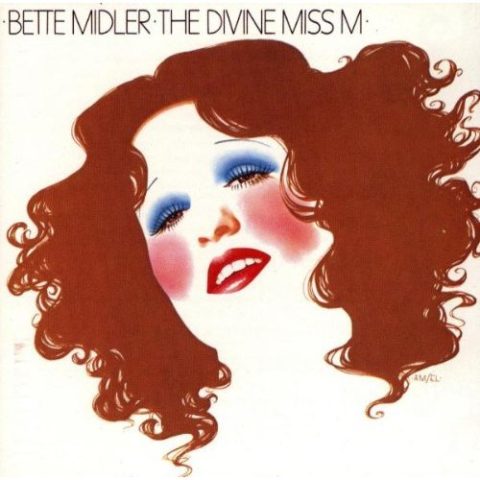
February 17, 2003
From Classy to Brassy: Music at the White House
By ANTHONY TOMMASINI
New York Times
n New Year’s Day 1801 the United States Marine Band, then a ragtag group of 10 musicians, performed during the first public reception at the White House, with President John Adams as host. Music has been a constant element of White House life ever since. Not just at receptions and affairs of state, but through a rich array of concerts by invited ensembles and artists, from the Budapest String Quartet to Duke Ellington and his orchestra, from Pablo Casals to Pearl Bailey.
Naturally the choice of music at the White House has reflected the tastes, not to mention the political agendas, of its occupants. To examine this connection was the interesting idea behind “The White House: In Tune With History,” an hourlong documentary on PBS tonight in honor of Presidents’ Day.
But the producers must have been wary of their idea, because the program jumps restlessly from topic to topic and zigzags through the history. Early on the actor Sam Waterston, reading a typically corny phrase from the narration, explains that at the White House music was “built into its walls from the very beginning.” We see a montage of images of the Marine Band, which today fields a large roster of top-notch musicians and plays for all official White House occasions, the general guideline being, in the words of one commentator, “strings for the inside, brass for the outside.”
We then learn that Thomas Jefferson, a good amateur violinist (and a half-decent composer), designated the Marine Band “the president’s own” and put it at the center of White House social life. Suddenly we skip ahead to Theodore Roosevelt, who used brass fanfares and musical pomp to enhance his international image, and then we jump backward to Lincoln, who would rest on a sofa in the Blue Room as the band played weekly public concerts from the portico. Next? John Philip Sousa, whose father had played trombone in the Marine Band. Sousa directed the band for 12 years, instilling sorely needed discipline. Just as you’re getting interested, the program backtracks again to Theodore Roosevelt, playing host to the annual Easter-egg-rolling party for children on the White House lawn. And so on.
The unfocused viewpoint and haphazard storytelling are surprising because the executive producer, John Goberman, winner of nine Emmy Awards and the longtime producer of “Live From Lincoln Center,” worked closely with the White House Historical Association. And Sara Lukinson, the co-producer and writer, has created the film biographies for the Kennedy Center Honors recipients for 18 years. Perhaps part of the problem is that with something as specialized as music, public television has long found it easier simply to present a performance, even Wagner’s four-hour-plus “Tristan und Isolde,” than to teach viewers something about the music or its history.
That’s too bad because some terrific segments that made it into the program suggest how rich the White House archives must be. We see the pianist Van Cliburn, a lanky Texan who came to fame for winning the 1958 Tchaikovsky Competition in Moscow, performing during the Reagan years, accompanying himself at the piano as he sings a Russian folk song for an utterly delighted Mikhail Gorbachev. There is Harry S. Truman showing off the White House piano, a special 9-foot-7-inch-long Steinway, by playing from memory the opening theme of Mozart’s Piano Sonata in A. (The program does not identify the work.) There is the oddly poignant sight of Richard M. Nixon, another amateur pianist, as stiff at the keyboard as he was on his feet, playing “Happy Birthday” to Ellington.
Intermittently you learn some interesting things. President James K. Polk, the historian Geoffrey Holder explains, appropriated “Hail to the Chief” as the requisite music when the president enters a room. Why? Polk was so small and thin that he might have gone unnoticed otherwise. Lincoln’s two sons adored the Marine Band marches, but after Willie Lincoln died at 12 from a fever caused by pollution in the White House water system, the band concerts stopped while Mary Todd Lincoln kept the White House draped in mourning for months.
As is well known, it was the Kennedy White House, mostly because of Jacqueline Kennedy, that sought to identify the administration with the fine arts and classical music, this at a time when rock ‘n’ roll was an American cultural phenomenon. We see the famous film of the 84-year-old Casals, who had ceased performing as a protest against Franco’s fascism, playing at the White House nearly 60 years after his concert there during Theodore Roosevelt’s tenure.
As the end of the program nears, images whiz by of classical artists like Leontyne Price, Frederica von Stade, Mstislav Rostropovich, Yo-Yo Ma, and of pop stars like Bette Midler and John Denver (none of them identified) performing at the White House. Then out of nowhere we flit back to the Madison administration. It turns out that Dolley Madison introduced hard liquor to White House receptions. Guess what background music is played as this last-minute tidbit is imparted? “Hello, Dolly!” Ho-ho. Is this the Marine Band version of the Jerry Herman tune? We never learn.
THE WHITE HOUSE
In Tune With History
On most PBS stations tonight
(check local listings)
John Goberman, producer and executive producer; Sara Lukinson, co-producer and writer; narrated by Sam Waterston. Produced by the White House Historical Association and Mr. Goberman with WETA, Washington.






